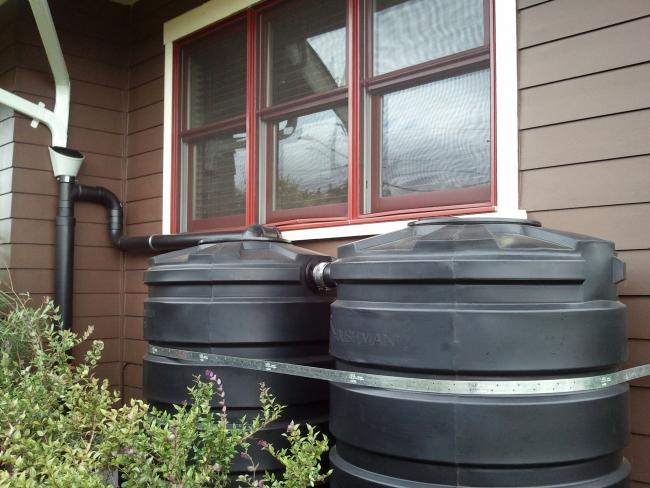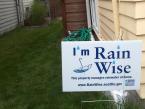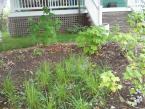Ballardites get smart about rain
SPU's RainWise program pays residents to build their own rain gardens and cisterns, diverting the amount of overflow that otherwise goes directly into sewers and Puget Sound.CLICK ON IMAGE TO START SLIDESHOW
Tue, 07/12/2011
By Christy Wolyniak, Intern
Saving money brings with it a new sound for a handful of Ballard residents who decided to capture rain instead of let it run all over them and leave them in puddles.
Seattle Public Utilities’ RainWise program pays residents to build their own rain gardens or install cisterns, which divert the amount of overflow that otherwise goes directly into sewers and Puget Sound. SPU will compensate 90 percent or higher based upon the square foot per roof water captured, making the cost of saving money appealing to many homeowners.
Ballard resident, James Bristow has been working closely with Bob Spencer, who is in charge of the Ballard RainWise project. Bristow has helped many of his neighbors with the installation of their cisterns as he is the only certified RainWise Installer in his neighborhood.
“I like the sound of free water. [The cisterns] gurgle when it rains,” said Ballard resident, Mark Davison. Though Davison’s neighbors initially did not like these ominous things near their house, they are now sharing the cistern to water their garden.
According to Bristow, an average of 36,000 gallons of water will run off Seattle homes. He generally installs four to six cisterns at a house, ranging from 205 to 1,020 gallons each. He said there is no limit to the number of cisterns installed at a home, as long as they are within building codes. Some might prefer a rain garden, as they are a nice yard addition.
Compared to cisterns, rain gardens require specific factors in order to function well. For one, soil is better if it is sandy, and must be able to soak up ¼’’ of water per hour. If the soil cannot do this, installers will not be able to build a rain garden at that location. They also must be ten feet from the basement (if there is not a basement, it can be five feet from the structure of the house) and three feet from the sidewalk and will not work well on hills or with retaining rock walls – factors which may make certain homes unsuitable for a rain garden.
Although rain gardens will not work for all homes, Bristow said about 80-90 percent of homes qualify for a cistern. He plans to build his own rain garden at his house in Ballard though he usually focuses on assisting his neighbors with installing cisterns.
“The goal is to [install rain gardens or cisterns at] 1,250 houses in the Loyal Heights neighborhood [alone]. So far we’ve done about 50 or 60,” said Bristow.
Street runoff from rain has been filtering directly into the city sewer systems as the number of combined sewer overflow tanks (CSO) is not enough to adequately capture all of the runoff. During the winter, cisterns capture roof runoff and serve as a buffer for the city so that these tanks do not overflow as often, said Davison. Come April through September, residents can begin using the stored water for their own purposes.
“Cisterns are the way to go, because you can actually use the water,” said neighbor Darrell Toland, who is funding the installation of his own cistern.
Toland cannot receive the city’s funding for his cistern because there is already an underground cistern in his driveway.
Bristow mentioned how having cisterns can be vital in emergencies such as an earthquake or other disasters because homes would already have gallons of stored water that can be easily potable.
“It’s a fantastic way to take advantage of the city program [RainWise]. We first looked at rain barrels, but they don’t reliably collect [as much as one cistern would],” said Carmen Hudson.
For more information, visit https://rainwise.seattle.gov/city/seattle/overview to see what you can do to get RainWise in your neighborhood.




